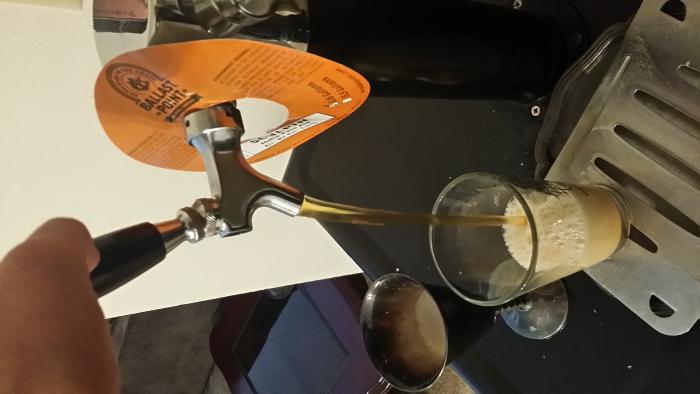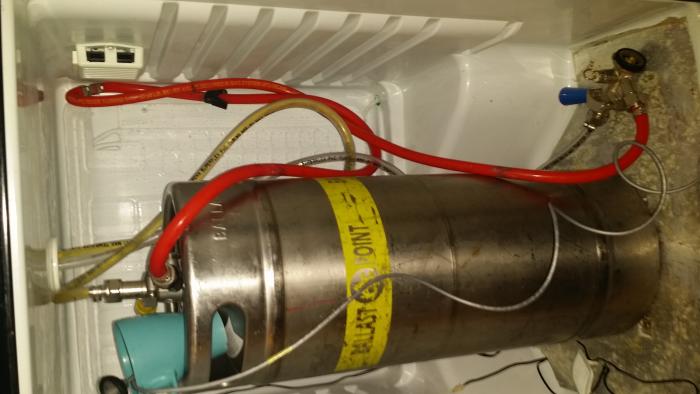Cummins_BLACKBREW
Member
- Joined
- Jan 26, 2014
- Messages
- 23
- Reaction score
- 0
So I had an old co2 tank and regulator that seemed to shoot out beer at 10 psi and only work well at 2 or 3 psi with sculpin ipa in at at around 37 degrees. So I got tired of messing with them and got a new co2 half off and a 47 dollar kegco kc542 double gauge regulator from beverage factory's warehouse. Now this one says there is a bottle pressure of 500 and the out put pressure is barely at 2 psi and it flows fine, I'm not really having to much foam issues though, if I do my best to tilt my glass like If I wanted zero foam then I get about 1.5 fingers of foam. I do have a duel spout. So I have 1 co2 line from the regulator to the inside of the kegerator, then inside it splits into two and one is tapped to a keg and one is just currently connected to the coupler but the coupler is shut. I do not hear any leaks at all, also I have a ten pound co2 bottle. I don't know of anymore information I should include as I am kind of new to this, but I hate waisting beer to try and get this thing working right!! Any help on why I'm hitting such a low psi? I have heard if it's to Low I'll get flat beer or over carbonated is to high or something like that but I don't think that's true but hey like I said I'm new. Any help works thanks guys cheers!!!





